Hand plane sets are an integral part of any woodworking toolkit. These tools, which have been used for centuries, are designed to shave thin layers off wood, making it smooth and level. They come in a variety of shapes and sizes, each designed for a specific task in the woodworking process.
The importance of hand plane sets in woodworking cannot be overstated. They are essential for achieving a smooth, professional finish on any woodworking project. Without them, it would be nearly impossible to achieve the level of precision required in fine woodworking.
Whether you’re a professional woodworker or a hobbyist, understanding the different types of hand planes and their uses can greatly improve the quality of your work. This article will provide a comprehensive overview of hand plane sets, their importance in woodworking, and how to choose the right one for your project.
Our Top Hand Plane Set Picks
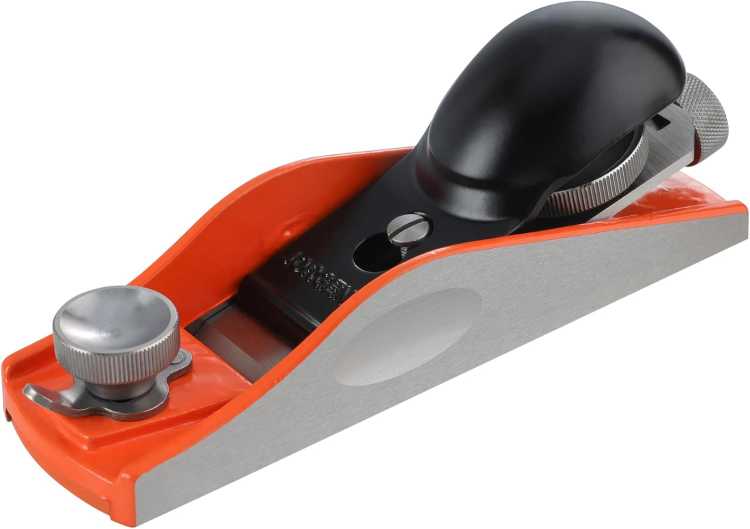
JORGENSEN Mini Wood Planer
Check on AmazonKey Specs
- Material: 9CrWMn O1 tool steel blade, ductile iron body
- Adjustable Depth: Easy blade depth and mouth width adjustments
- Portable: Compact and lightweight design for easy handling
- Durability: Zinc alloy lever cap and stainless steel components
- Versatility: Suitable for trimming, deburring, and woodworking tasks
The JORGENSEN Mini Wood Planer is a precision tool ideal for detail woodworking and surface smoothing tasks. The blade is crafted from 9CrWMn O1 tool steel, offering durability and high cutting efficiency, and is adjustable for varying wood depths. The body, made from ductile iron, ensures ruggedness, while the zinc alloy lever cap and stainless steel parts guarantee long-lasting performance. Its compact design makes it easy to use, making it perfect for both professionals and DIY enthusiasts.
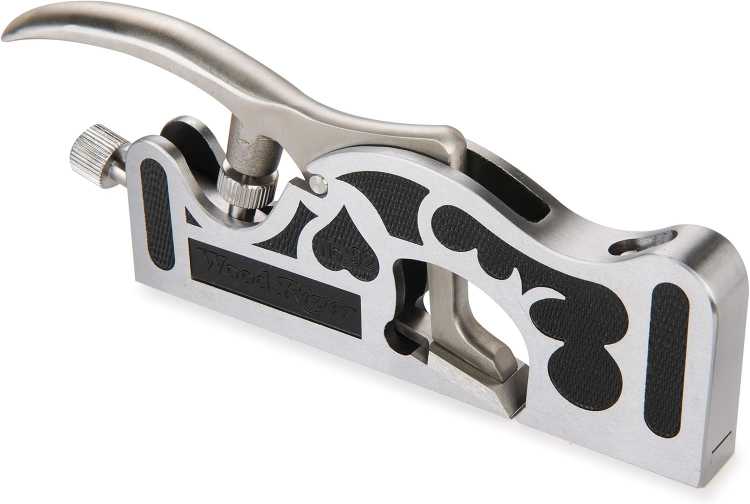
WOODRIVER Medium Shoulder Plane
Check on AmazonKey Specs:
- Material: Cr40 ductile steel, Mn65 tool steel blade
- Adjustable Toe: Controls throat opening for better precision
- Blade Mechanism: Smooth, precise blade advancement
- Sides: Square to the sole for accuracy
- Weight: 2.35 pounds for a comfortable and controlled use
The WOODRIVER Medium Shoulder Plane is a precision tool designed for fine woodworking tasks like adjusting tenons, rabbets, and dadoes. Crafted from Cr40 stress-relieved ductile steel and Mn65 tool steel, it offers durability and strength. The adjustable toe controls the throat opening, minimizing tear-out on end grain. With square sides to the sole and a smooth, precise blade advancement mechanism, this plane delivers a classic look and exceptional performance, making it ideal for both professional woodworkers and enthusiasts.
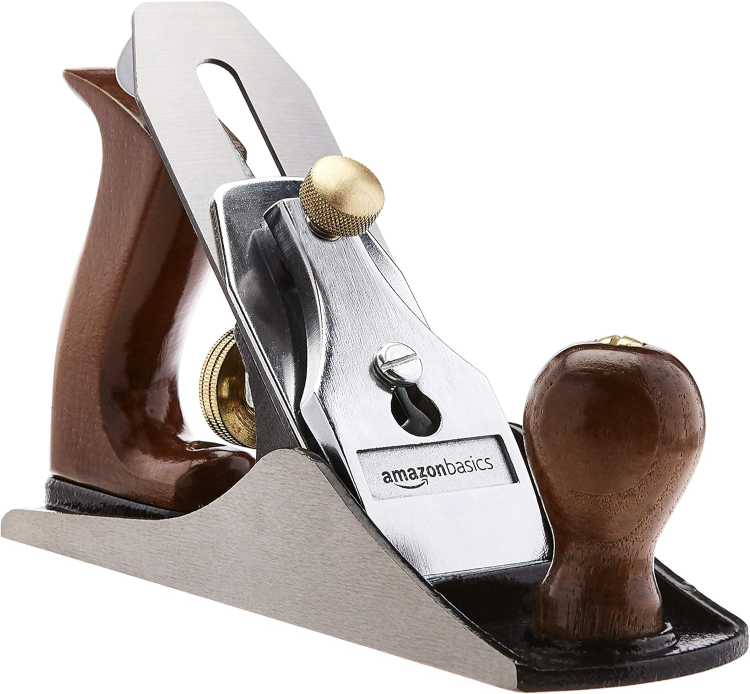
Amazon Basics Smoothing Bench Hand Plane
Check on AmazonKey Specs:
- Material: Cast iron body, steel alloy blade
- Blade Type: Durable steel alloy for quality cuts
- Handle: Impact-resistant wood with contoured grip
- Adjustable Gear: Allows for precise adjustments
- Dimensions: 10″L x 2.6″W x 5.5″H, 3.82 pounds weight
The Amazon Basics Smoothing Bench Hand Plane is an excellent tool for woodworking and carpentry. With its durable cast iron body, this plane provides the necessary stability and strength for precise smoothing tasks. The impact-resistant wood handle features a contoured grip for comfort during use, while the steel alloy blade ensures sharp, quality cuts. Its adjustable gear allows for fine-tuning, enabling users to achieve accurate and smooth results with ease.
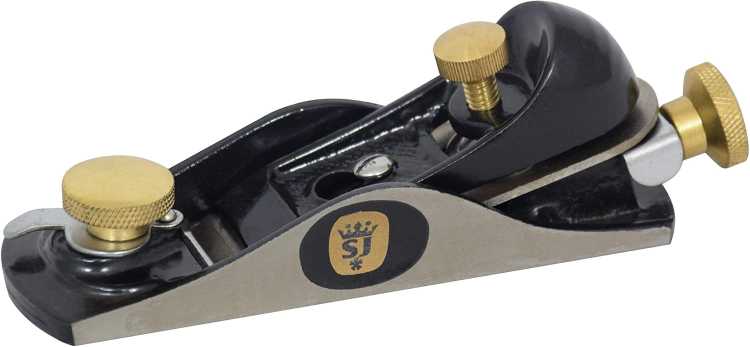
Spear & Jackson CBP95 Carpenters Block Plane
Check on Amazon
Key Specs:
- Material: Cast iron body, brass adjusting screw
- Blade: 1 5/8 inch (42mm) low-angle cutter
- Dimensions: 6.89″L x 2.76″W x 1.77″H
- Weight: 1.98 pounds
- Adjustable Mouth: Fully adjustable for versatile use
The Spear & Jackson CBP95 9 1/2 Carpenters Block Plane is a top choice for end grain work and single-handed operation. Its cast iron body ensures durability, while the precision-milled base and faces provide accurate performance. The 1 5/8 inch wide low-angle cutter offers smooth cutting, and the fully adjustable mouth allows for versatile usage. The brass adjusting screw provides easy blade adjustment, ensuring optimal results. A replacement blade (CBP95BLADE) is also available.
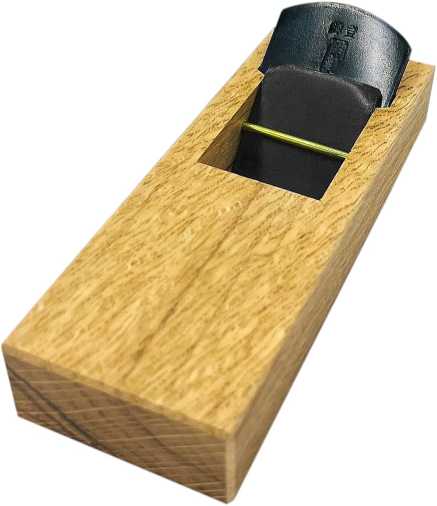
KAKURI Japanese Hand Plane
Check on AmazonKey Specs:
- Material: Japanese high-carbon steel blade, ECO oak body
- Dimensions: 5.9″L x 2.1″W x 1.6″H
- Blade Width: 42 mm (1.65″)
- Cutting Width: 36 mm (1.42″)
- Weight: 9.4 ounces
- Included: English instruction manual
The KAKURI Japanese Hand Plane is a traditional tool designed for precision woodworking. It features a high-carbon steel blade, sharpened by expert craftsmen, providing an incredibly smooth finish on wood. The plane’s compact size makes it perfect for intricate tasks, and it is easy to handle, even for beginners. Its body is made from durable ECO oak, ensuring a smooth planing experience. The two-blade structure, featuring a chipbreaker, prevents wood from splitting and ensures safe, efficient use.
Understanding Hand Planes
Hand planes are tools used in woodworking to cut, shape, and smooth wood. They consist of a blade, or iron, attached to a flat body, or sole. The blade is adjusted to protrude a small amount from the sole, allowing it to shave off thin layers of wood when pushed across a surface.
There are many different types of hand planes, each designed for a specific task. For example, bench planes are used for flattening and smoothing large surfaces, while block planes are used for end grain and general-purpose work. Specialty planes, such as rabbet planes and router planes, are used for specific tasks like cutting grooves and shaping edges.
Understanding the function and use of each type of hand plane is crucial for achieving the best results in your woodworking projects. The right plane can make the difference between a rough, amateurish finish and a smooth, professional one.
Importance of Hand Plane Sets in Woodworking
Hand plane sets play a vital role in achieving smooth finishes in woodworking. By shaving off thin layers of wood, they allow you to gradually refine the surface of your project until it is perfectly smooth and level. This is particularly important in fine woodworking, where a smooth, flawless finish is often the goal.
Hand plane sets also contribute to precision in woodworking. They allow you to make fine adjustments to the shape and size of your workpiece, ensuring that every piece fits together perfectly. This level of precision is essential for complex projects like furniture making, where even a small error can throw off the entire design.
Whether you’re crafting a delicate piece of furniture or simply smoothing a piece of lumber, a good hand plane set is an indispensable tool. It allows you to work with a level of precision and control that simply isn’t possible with power tools alone.
Factors to Consider When Buying Hand Plane Sets
When buying a hand plane set, the quality of materials is one of the most important factors to consider. The best hand planes are typically made from high-quality steel and durable hardwoods. These materials ensure that the plane is sturdy and durable, capable of withstanding the rigors of regular use.
The size and type of hand planes included in the set is another important consideration. A good set should include a variety of planes, each designed for a specific task. This will ensure that you have the right tool for any job, from smoothing large surfaces to shaping delicate edges.
Finally, brand reputation and reviews can provide valuable insight into the quality of a hand plane set. Brands with a history of producing high-quality tools are generally a safe bet, while reviews from other woodworkers can help you avoid low-quality products.
Understanding the Different Types of Hand Planes
Bench planes are the most common type of hand plane. They are typically used for flattening and smoothing large surfaces. Bench planes come in a variety of sizes, from the large jointer planes used for flattening long boards to the smaller smoothing planes used for final finishing.
Block planes are smaller than bench planes and are used for a variety of general-purpose tasks. They are particularly useful for working on end grain, where their low-angle blade can cut cleanly without tearing the wood fibers.
Specialty planes are designed for specific tasks in woodworking. These include rabbet planes, which are used for cutting grooves and rabbets, and router planes, which are used for cutting dadoes and grooves. Each of these planes has a unique design that makes it particularly suited to its intended task.
How to Choose the Right Hand Plane for Your Project
Choosing the right hand plane for your project depends on a number of factors, including the size of the workpiece and the specific task at hand. For large surfaces, a bench plane is usually the best choice. For smaller tasks, a block plane or a specialty plane may be more appropriate.
Understanding the specific function of each type of hand plane can also help you choose the right tool for your project. For example, if you need to cut a groove in a piece of wood, a rabbet plane or a router plane would be the best choice. If you’re simply trying to smooth a surface, a bench plane or a block plane would be more appropriate.
Finally, it’s important to consider the size of the plane. Larger planes are better for working on large surfaces, while smaller planes offer more control for delicate tasks. By considering these factors, you can ensure that you choose the right plane for your project.
Top Hand Plane Set Brands
There are many brands that produce high-quality hand plane sets. Some of the most popular include Stanley, Lie-Nielsen, and Veritas. These brands are known for their high-quality materials, precision manufacturing, and durable designs.
When comparing hand plane sets, it’s important to consider factors like quality, price, and customer reviews. High-quality sets are typically made from durable materials and feature precise, adjustable blades. They may be more expensive, but they are also likely to last longer and perform better.
Customer reviews can also provide valuable insight into the performance of a hand plane set. Look for reviews from other woodworkers, who can provide firsthand information about the set’s performance, durability, and ease of use.
How to Use a Hand Plane
Using a hand plane involves a few basic steps. First, adjust the blade so that it protrudes a small amount from the sole of the plane. Then, hold the plane firmly with both hands and push it across the surface of the wood, applying even pressure throughout the stroke. The plane should shave off a thin layer of wood with each pass.
There are also a few safety precautions to take when using hand planes. Always make sure your hands are clear of the blade, and never plane towards yourself. Also, make sure the wood is securely clamped or otherwise immobilized to prevent it from moving while you work.
With practice, using a hand plane can become a smooth, rhythmic process. The key is to maintain even pressure and a consistent angle, allowing the plane to do the work without forcing it.
Maintenance of Hand Plane Sets
Maintaining your hand plane set is crucial for ensuring its longevity and performance. This includes regular cleaning, proper storage, and periodic sharpening of the blades.
Cleaning your hand planes involves removing any dust or debris from the sole and blade, and applying a light coat of oil to prevent rust. Storage is also important; hand planes should be stored in a dry, cool place to prevent damage from moisture and temperature changes.
Sharpening your hand planes is perhaps the most important aspect of maintenance. A sharp blade cuts more efficiently and leaves a smoother finish. The frequency of sharpening depends on how often you use your planes, but as a general rule, the blade should be sharpened whenever it starts to feel dull or requires more effort to push.
Case Study: Successful Woodworking Projects Using Hand Plane Sets
Hand plane sets have been used in countless successful woodworking projects. For example, a furniture maker might use a bench plane to flatten a large board, a block plane to smooth the end grain, and a rabbet plane to cut a groove for a drawer slide. Each plane contributes to the overall precision and quality of the finished piece.
In another example, a woodworker might use a hand plane set to craft a custom picture frame. The bench plane could be used to smooth the large surfaces, the block plane to refine the edges, and a specialty plane to cut a rabbet for the glass. Again, each plane plays a crucial role in achieving the final result.
These examples illustrate the versatility and importance of hand plane sets in woodworking. Whether you’re crafting a piece of fine furniture or a simple picture frame, a good hand plane set can help you achieve a level of precision and finish that is hard to match with power tools alone.
Common Mistakes to Avoid When Using Hand Plane Sets
There are a few common mistakes to avoid when using hand plane sets. One of the most common is using the wrong type of plane for the task at hand. For example, using a bench plane to cut a groove or a rabbet will likely result in a rough, uneven cut. Always make sure to use the right plane for the job.
Another common mistake is using a dull blade. A dull blade requires more effort to push and leaves a rougher finish. Regularly sharpening your blades can help avoid this problem.
Poor maintenance practices can also lead to problems. Neglecting to clean your planes, store them properly, or sharpen the blades can result in damage and poor performance. Regular maintenance is crucial for keeping your hand plane set in good working order.
The Future of Hand Plane Sets
While hand plane sets have been used for centuries, they continue to evolve with advances in technology and design. Modern hand planes often feature adjustable blades, ergonomic handles, and other features that make them more efficient and comfortable to use.
As the woodworking industry continues to evolve, it’s likely that hand plane sets will continue to play a crucial role. They offer a level of precision and control that is hard to match with power tools, making them an essential tool for any woodworker.
Whether you’re a professional woodworker or a hobbyist, investing in a high-quality hand plane set can greatly improve the quality of your work. By understanding the different types of hand planes and their uses, you can choose the right tools for your projects and achieve a level of finish and precision that is truly impressive.
Conclusion
In conclusion, hand plane sets are an essential tool for any woodworker. They offer a level of precision and control that is hard to match with power tools, making them invaluable for achieving a smooth, professional finish.
Whether you’re a professional woodworker or a hobbyist, understanding the different types of hand planes and their uses can greatly improve the quality of your work. By investing in a high-quality hand plane set, you can ensure that you have the right tool for any job, from smoothing large surfaces to shaping delicate edges.
With proper care and maintenance, a good hand plane set can last a lifetime, providing countless hours of satisfaction and a level of craftsmanship that is truly impressive. So whether you’re just starting out in woodworking or looking to upgrade your toolkit, consider investing in a high-quality hand plane set. You won’t regret it.
Appendices
For further reading on hand plane sets, consider the following resources:
1. “The Handplane Book” by Garrett Hack
2. “Making and Mastering Wood Planes” by David Finck
3. “The Essential Woodworker” by Robert Wearing
FAQ
What is a hand plane?
hand plane is a tool used in woodworking to cut, shape, and smooth wood. It consists of a blade, or iron, attached to a flat body, or sole.
What are the different types of hand planes?
There are many different types of hand planes, including bench planes, block planes, and specialty planes like rabbet planes and router planes.
How do I choose the right hand plane for my project?
Choosing the right hand plane depends on the size of the workpiece and the specific task at hand. Understanding the function of each type of plane can help you make the right choice.
